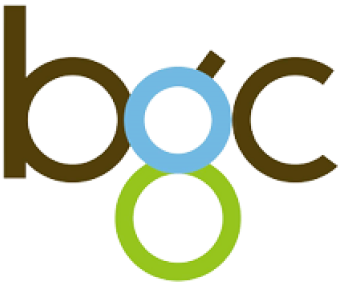Welcome to the employee onboarding guide for new hires in Singapore! This guide has been created to assist employers in efficiently and effectively onboarding new personnel within Singapore. It will be particularly handy for those employing staff in Singapore outside their country of residence and will also show them how a reliable Employer of Record (EOR) in Singapore can be a boon.
From essential legal considerations and compliance to fostering a positive workplace culture, this guide offers employers the roadmap necessary for a seamless onboarding process. Let’s dive in!
Importance and Objectives of Employee Onboarding
Effective employee onboarding is crucial for fostering a positive workplace culture, enhancing employee engagement, and accelerating productivity. The primary objectives include integrating new hires seamlessly into the organization, ensuring a clear understanding of job roles and expectations, and establishing a foundation for long-term employee success and retention.
Onboarding can start from the moment a new employee signs their letter of offer and generally ends on their first day or at the end of their first week.
Preparing for Arrival: Documentation and Logistics
Onboarding new employees in Singapore involves careful documentation and logistics to ensure a smooth integration into the company. Here's an overview of the key elements.
Documentation should include:
- 1. Employment Contract
- 2. Personal Data Protection Agreement
- 3. Work Pass Application
- 4. Tax Forms
- 5. Bank Account Details
- 6. Employee Handbook
Logistics can include:
- 1. Conducting orientation programs to introduce new employees to the company's culture, values, and organizational structure.
- 2. Ensuring that the employee's workspace is set up with the necessary equipment, including computers/ laptops, phones, and access cards.
- 3. Coordinating with the IT department to grant access to necessary systems and applications. This includes email accounts, project management tools, and any other relevant platforms.
- 4. Providing a welcome kit containing essential information, including an organizational chart, contact details of key personnel, and any other materials relevant to the employee's role.
- 5. Conducting a health and safety briefing, familiarizing the new employee with emergency procedures, office protocols, and relevant health and safety measures.
- 6. Facilitating social integration by organizing team lunches, introductions to colleagues, and participation in team-building activities.
If done carefully, employers in Singapore can ensure that new joiners experience a seamless and positive onboarding process.
Orientation and Training: Introducing Company Culture
In Singapore, effective orientation and training programs are pivotal for integrating new employees and instilling the company's culture.
As an employer, you can introduce your company culture during orientation and training with a welcome session, introducing key team members, and providing an overview of the company's history and mission. It is also essential to cover key policies, including code of conduct, work hours, leave procedures, and any other pertinent rules and regulations
Training Programs could revolve around training about the job as well as cultural integration.These could include:
- 1. Job-Specific Training
- 2. Compliance Training
- 3. Diversity and Inclusion Training
- 4. Customer Service Standards
- 5. Health and Safety Procedures
- 6. Professional Development
- 7. Team Collaboration
- 8. Performance Expectations
Benefits Enrollment and HR Procedures
Navigating benefits enrollment and human resources (HR) procedures in Singapore involves adhering to local regulations and ensuring a seamless experience for employees.
This includes:
Benefits Enrollment:
- 1. Medisave Contributions: Singapore mandates contributions to the Central Provident Fund (CPF), including the Medisave account for healthcare expenses.
- 2. Healthcare Coverage: Provide comprehensive healthcare coverage, either through employee contributions or employer-sponsored insurance schemes, adhering to the requirements of the Ministry of Manpower (MOM).
- 3. Retirement Savings (CPF): Familiarize employees with the CPF contribution structure, which includes contributions to Ordinary, Special, and Medisave Accounts.
- 4. Annual Leave and Holidays: Communicate the company's policies on annual leave entitlements, public holidays, and any additional leave benefits.
HR Procedures cover
1. Work Pass and Permits:
Facilitate the application process for work passes, such as Employment Passes (EP) and S Passes, for foreign employees.
2. Employee Contracts:
Issue comprehensive employment contracts outlining terms and conditions, including roles, responsibilities, and compensation details, in compliance with Singaporean employment laws.
3. Payroll Processing:
Implement a robust payroll system to ensure accurate and timely salary disbursements, including CPF contributions and tax deductions.
4. Performance Appraisals:
Establish a performance appraisal system to assess and reward employee contributions.
5. Training and Development:
Offer continuous learning opportunities and training programs to enhance employees' skills and competencies. Encourage professional development aligned with business goals.
6. Termination and Resignation Procedures:
Establish clear procedures for employee termination or resignation, adhering to legal requirements and providing necessary documentation.
7. Health and Safety Compliance:
Ensure compliance with workplace health and safety regulations. Conduct regular safety training and emergency drills to maintain a secure work environment.
8. Employee Grievance Procedures:
Establish effective grievance procedures, providing employees with a mechanism to address concerns and disputes.
Through the above, employers can create a supportive and compliant workplace environment that attracts and retains top talent.
Feedback and Follow-Up for New Hires
Feedback and follow-up processes for new hires in Singapore are integral to their successful integration into the company. This makes employees feel supported, and potential issues are addressed promptly.
Feedback
Feedback could be in the form of initial feedback sessions after the orientation program to gauge new hires' understanding and address any immediate concerns.
The HR team could use surveys and questionnaires, schedule regular one-on-one check-ins between new hires and their supervisors, establish feedback loops within teams to encourage open communication, conduct formal performance reviews at predefined intervals, offer constructive feedback and recognize achievements, and implement mentorship programs where seasoned employees guide new hires.
Follow-up Procedures
These could include developing action plans based on feedback received, identifying areas where additional training or development opportunities may be beneficial for individual employees or the entire team, and being flexible in adapting feedback and follow-up procedures to evolving circumstances.
How a Dedicated EOR in Singapore Can Make All the Difference
Every entrepreneur dreams of expanding their business, and with geographical boundaries blurring today, having a base in a foreign country is not uncommon. However, while global expansion is an exciting prospect, especially in the dynamic business landscape of Singapore, having a reliable Employer of Record (EOR) service provider like BGC is essential for employers seeking streamlined operations overseas. There are a zillion things to take care of while hiring overseas staff.
A proficient EOR in Singapore ensures compliance with local regulations, helps sidestep the tedious administrative red tape, and facilitates speedy onboarding of talent. With a proven track record of excellence in payroll, tax compliance, and employment laws, an EOR partner like BGC not only mitigates risks but also empowers businesses to grow in Singapore.
Get in touch with us today!




